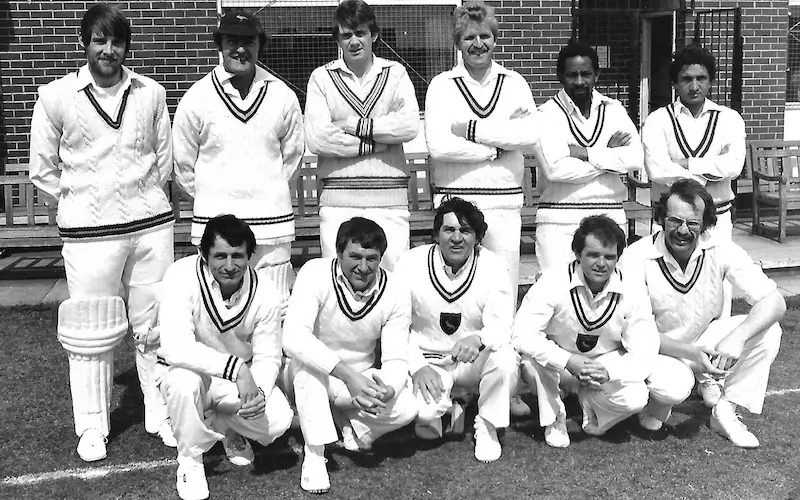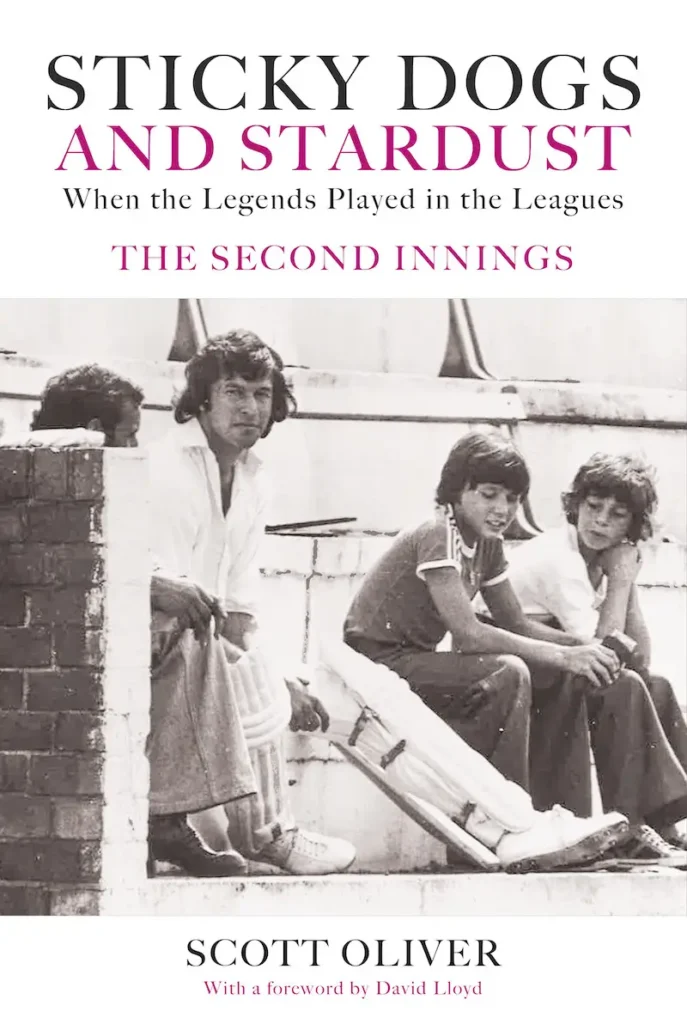In an extract from the follow-up to the award-winning Sticky Dogs and Stardust: When the Legends Played in the Leagues, out on March 24, Scott Oliver tells the story of Abdul Qadir’s arrival at Hanging Heaton and the role played by Pakistan captain (and one-time Wakefield superstar) Imran Khan.
***
Abdul touched down in Manchester and was taken by Brian Wilkinson straight to his welcome party – which is to say, a specially organised net for Hanging Heaton to run the rule over their shiny new bauble, with Ronnie Hudson the guinea pig in pads trying to operate Googly Translate.
Two days later, the pro got into his match-day work, starting with 3/38 from 17 tidy overs against Bowling Old Lane, who nevertheless hung on eight down. Solid start.

Seven days later, Qadir returned 8-0-51-0 against a strong Farsley side who romped past their 270 target thanks to a top three who would go on to make 218, 216 and 248 first-class appearances respectively:
70 runs coming from the bat of Kevin Sharp, 100 from Ashley Metcalfe and 26 from Tim Boon. (Raymond Illingworth, unretired and back in the county game with Yorkshire at 49 after a four-year hiatus, also turned out a few times that summer for his boyhood club, which adds another 787 first-class games to the pot.)
It was the first day of May, the Punjabi pinkies were cold and unresponsive in the Baltic conditions – “it was absolutely freezing and Abdul must have had four or five jumpers on”, chuckles Hudson, “I kid you not!” – and the Hanging Heaton hardcore were keeping as firm a grip of their views on the new overseas as the folklore says a Yorkshireman does of his £10 notes.
Imran [Khan] was keeping close tabs on things, too, calling Solly Adam every Saturday night for an update.
Adam reported back that Wilkinson’s feet were getting as cold as Qadir’s fingers. He even had
to petition Hanging Heaton to give it two more weeks of try-before-you-buy, after which, if they were still unhappy, he would accept the unwanted goods. Over the next four games, all doubts were laid to rest, the naysayers swayed by cricket’s universal bottom line: numbers.
First, on the day the Pakistani touring party was announced, Abdul bounced in and bounced back with 6/56 against eventual champions Bingley, whose 186 nevertheless proved seven runs too many. The following day, against Spen Victoria in the Priestley Cup, it was 6-2-10-5, and Hudson is “pretty sure four of those runs came off the thigh-pad and should have been leg byes”.
The next league game saw Qadir jam out all the big tunes in a spell of 15-6-22-6 against Eccleshill, although Heaton once more failed to knock off the runs.
Good luck facing this stuff, pal
And a week later, at home to Yeadon, the maestro really began to flex, completely upstaging the visitors’ none-too-shabby spin attack: offie Geoff Cope, who had made his England bow in the same Lahore Test in which Qadir had debuted, and an 18-year-old Richard Illingworth, in the foothills of a long career that took him all the way to the 1992 World Cup final.
Hanging Heaton raced to 257/5 from 45 overs – Hudson biffing a 60-minute ton as Illingworth was spanked for 1/82 off 11, Cope taking 0/47 off 11 – with Yeadon then crawling to 89/8 from 52 overs in reply, Qadir whirling merrily through 20-10-35-7 on a mild, late-spring day.
Trees blossomed, bluebells bloomed and salacious West Yorkshire smiles burst forth, the sort that say: good luck facing this stuff, pal. Then everything went tits up.
It was the second round of the Priestley Cup, at home to Undercliffe, whose attack was spearheaded by Peter Hartley – en route to 232 first-class appearances and the ICC umpiring panel – while the overseas pro was Haroon Rasheed, scorer of centuries in each of Qadir’s first two Tests.
Abdul had a maximum of three more West Yorkshire weekends before having to join up with the Pakistan squad, and was in a pretty good place with his bowling. It was coming out okay. As per the Khan Plan, cobwebs had been tickle-sticked away.
Indeed, it is conceivable that Abdul would have reasoned that his recent form for Hanging Heaton – 24 wickets at 5.5 apiece, striking every 15 balls while going at 2.2 runs per over – would be enough to guarantee him choice of ends. But that was not so.
“Roger Braithwaite always bowled at the Club End,” explains Hudson. “Against Undercliffe, David Garner brought Abdul on from that end after David Peel’s opening spell. Strategically, it was a mistake because he needed Roger to bowl in tandem with him, and Roger had never bowled from the Fox End. So David was obliged to ask Abdul to change ends.
And Abdul said no.
David came over and told me what had happened. I said, ‘Ask him again’. He did, and Abdul still refused to change ends.”

Sticky Dogs and Stardust: When the Legends Played in the Leagues – The Second Innings is published by Fairfield Books on March 24th and available to order on thenightwatchman.net, priced at £23.99 including UK P&P or as an ebook priced at £4.99.
📸 Image credit of Abdul Qadir with Hanging Heaton squad (1982): Argus & Telegraph
- Lacuna Sports: Cricket teamwear just for women and girls - December 4, 2025
- Grassroots cricket is not dying – but it is changing - December 2, 2025
- Howden’s Ashes story: Pavilion in flames to future plans - December 1, 2025